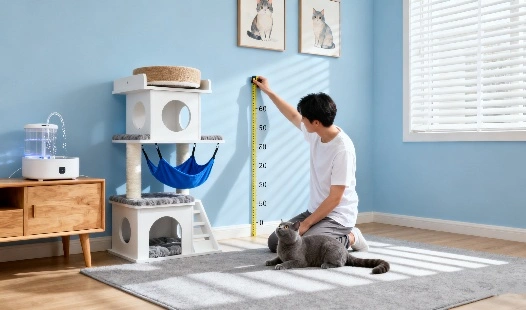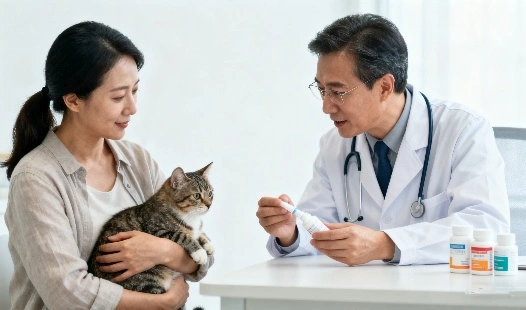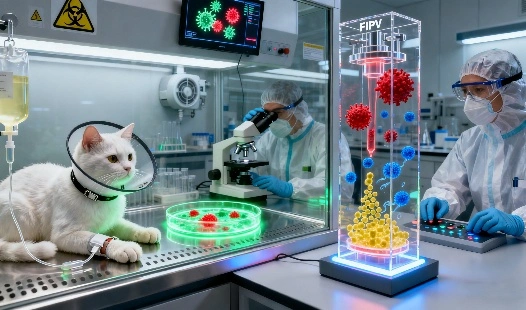How to switch from GS 441524 injection to oral pills safely?
Timing and dosage conversion guidelines
Owners of cats undergoing treatment for feline infectious peritonitis (FIP) with GS 441524 injection may find relief after switching to oral tablets. It is important to proceed with caution while making this change so that the therapy continues to work. If your cat is currently on GS 441524 injections, this detailed guide will show you how to properly switch to oral tablets.


Timing and dosage conversion guidelines
When to consider switching to oral GS-441524
The ideal time to transition from injectable to oral GS-441524 is typically after 4-6 weeks of successful treatment, once your cat is showing clear signs of improvement. Key indicators that your cat may be ready include:
- Increased energy and appetite
- Weight gain
- Improved bloodwork results
- Resolution of effusions in wet FIP cases
However, always consult with your veterinarian before making any changes to your cat's treatment regimen. They can assess your cat's individual case and determine if switching to oral medication is appropriate.
Proper dosage conversion
When transitioning to oral GS-441524, the dosage typically needs to be increased to account for differences in bioavailability between injectable and oral forms. A general guideline is:
- For cats receiving 5-8 mg/kg GS 441524 injection: Start with 10-12 mg/kg oral dose
- For cats receiving 10 mg/kg or higher injectable dose: Start with 15-18 mg/kg oral dose
It's crucial to work closely with your veterinarian to determine the appropriate oral dosage for your cat based on their current injectable dose, response to treatment, and any other health factors.
Gradual transition process
A gradual transition over 3-5 days is often recommended to minimize potential side effects and ensure your cat adjusts well to the new formulation:
- Day 1-2: 75% injectable dose + 25% oral dose
- Day 3-4: 50% injectable dose + 50% oral dose
- Day 5: 25% injectable dose + 75% oral dose
- Day 6 onwards: 100% oral dose
This gradual approach allows you to monitor your cat closely for any adverse reactions or changes in effectiveness.
Monitoring your cat during formulation transition

Key parameters to track
Closely monitor your cat's progress during the transition period. Pay attention to:
- Activity levels and behavior
- Appetite and water intake
- Weight
- Body temperature
- Any recurring FIP symptoms
Keep a daily log of these parameters to easily identify any concerning trends.
Regular veterinary check-ups
Schedule more frequent check-ups with your veterinarian during the transition period. They may recommend:
- Weekly physical exams
- Blood tests to monitor key markers like hematocrit, albumin, and globulin levels
- Ultrasounds for cats recovering from wet FIP
These assessments help ensure the oral medication is working as effectively as the injections and allow for quick adjustments if needed.


Potential side effects to watch for
While oral GS 441524 injection is generally well-tolerated, be alert for potential side effects such as:
- Gastrointestinal upset (vomiting, diarrhea)
- Decreased appetite
- Lethargy
- Skin rashes or itching
Report any concerning symptoms to your veterinarian promptly. They may recommend adjusting the dosage or administration method to mitigate side effects.
Signs that oral therapy is working effectively
Clinical improvements
Effective oral GS-441524 therapy should maintain or continue the improvements seen with injectable treatment. Look for:
- Sustained energy levels and playfulness
- Consistent appetite and weight gain
- Normal body temperature
- Absence of FIP-related symptoms (e.g., no recurrence of effusions, neurological signs, or ocular issues)
Laboratory markers
Your veterinarian will monitor key blood values to ensure the oral medication is effectively controlling the FIP virus. Positive indicators include:
- Stable or improving hematocrit
- Normalizing albumin and globulin levels
- Decreasing inflammatory markers
Long-term response
Successful transition to oral GS-441524 should allow for continued improvement over the full course of treatment. Most cats require 12 weeks of therapy, though some may need longer based on their initial presentation and response.
Remember that the GS-441524 cost for oral formulations may differ from injectable versions. Discuss any financial considerations with your veterinarian when planning the transition.
Conclusion
Transitioning from injectable to oral GS-441524 can greatly improve quality of life for both cats and their owners during FIP treatment. By following these guidelines and working closely with your veterinarian, you can safely make the switch while maintaining effective therapy. Remember that each cat's journey with FIP is unique, and flexibility in treatment approach is key to success.
The GS-441524 cost savings of oral formulations, combined with easier administration, make this transition appealing for many. However, the primary focus should always be on ensuring your cat receives the most effective treatment for their individual case.


FAQ
1. Q: Can all cats switch from injectable to oral GS-441524?
A: Not all cats are suitable candidates for switching to oral GS-441524. Cats with neurological FIP or those not responding well to injectable treatment may need to continue with injections. Your veterinarian will assess your cat's individual case to determine if oral therapy is appropriate.
2. Q: How long does it take to see if oral GS-441524 is working effectively?
A: Most cats will show continued improvement within 1-2 weeks of transitioning to oral therapy if it's working effectively. However, it's important to monitor your cat closely for at least 4 weeks after the switch to ensure stable progress.
3. Q: What should I do if my cat refuses to take the oral medication?
A: If your cat is resistant to taking oral pills, discuss alternative options with your veterinarian. Some cats may do better with flavored liquid formulations or compounded treats. In some cases, it may be necessary to return to injectable treatment if oral administration is not feasible.
Partner with BLOOM TECH for Your GS-441524 Needs
When it comes to treating infectious peritonitis in cats, BLOOM TECH knows how important it is to have high-quality GS-441524. We assist your cat's treatment journey as a top GS-441524 supplier by offering both injectable and oral preparations. Every batch of our goods is guaranteed to be consistent and pure since we produce them in our GMP-certified facilities using stringent quality control techniques.
Competitive price, a dependable supply chain, and thorough product documentation are our proudest achievements. Feel free to contact our knowledgeable staff at any time if you have any questions about the formulation, dosage, or administration of GS-441524. Reach out to us for cheap, high-quality options—don't allow worries about the GS-441524 cost prevent your cat from getting the therapy it needs.
For inquiries about our GS-441524 products or to discuss your specific needs, please contact our dedicated sales team at Sales@bloomtechz.com. Let BLOOM TECH be your trusted partner in FIP treatment.
References
1. Pedersen, N.C., et al. (2019). Efficacy and safety of the nucleoside analog GS-441524 for treatment of cats with naturally occurring feline infectious peritonitis. Journal of Feline Medicine and Surgery, 21(4), 271-281.
2. Murphy, B.G., et al. (2020). Treatment of cats with feline infectious peritonitis with the nucleoside analog GS-441524. Animals, 10(4), 678.
3. Dickinson, P.J., et al. (2020). Antiviral treatment using the adenosine nucleoside analogue GS-441524 in cats with clinically diagnosed neurological feline infectious peritonitis. Journal of Veterinary Internal Medicine, 34(4), 1587-1593.
4. Addie, D.D., et al. (2020). Feline infectious peritonitis. ABCD guidelines on prevention and management. Journal of Feline Medicine and Surgery, 22(11), 1047-1068.

Echo
9 years of experience in chemical articles; Doctoral degree; Organic Chemistry major; R&D-4 Dept; Technology support; R&D engineer
Anticipating your Business & Technology support inquiry
Please send us the products that interest you, and we will provide you with one-on-one service
Recommended Blog

An International Buyer's Guide to GS-441524: From Order to Delivery
_副本_1762136034017.webp)
How to switch from GS 441524 injection to oral pills safely?


_副本_1759202159323.webp)

_副本_1760064950733.webp)
_副本_1758780801172.webp)




